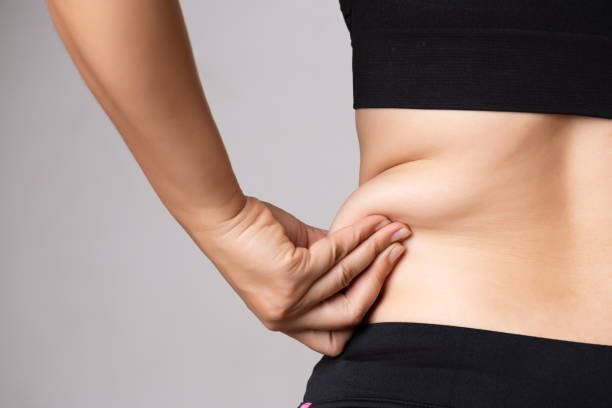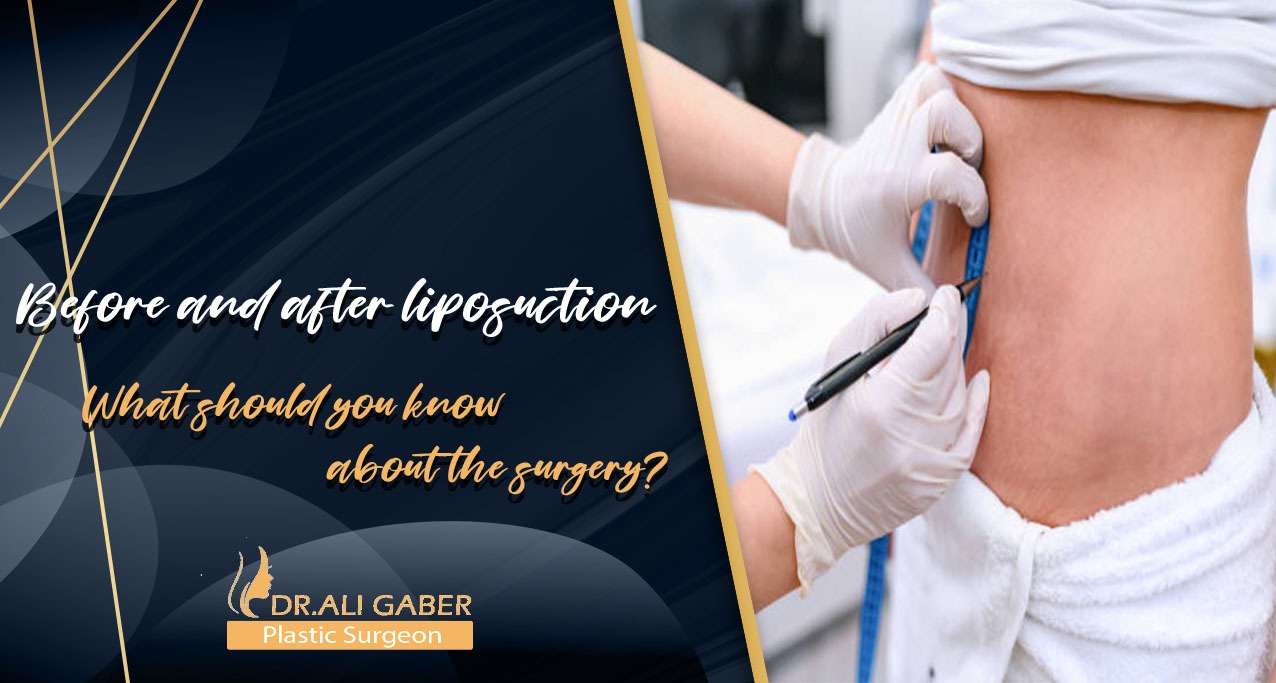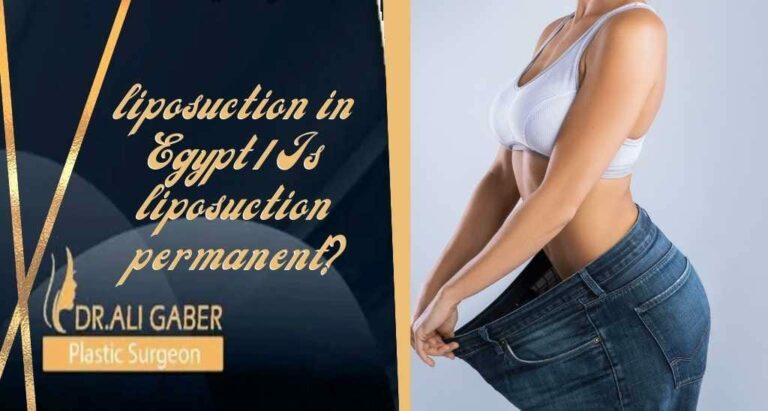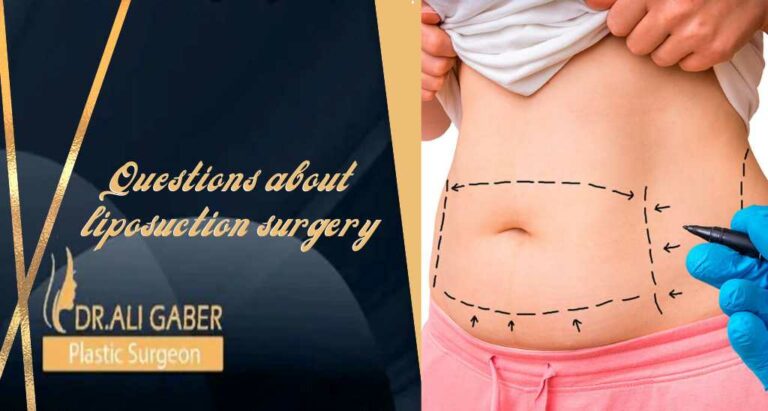Liposuction is a medical cosmetic procedure that helps to get rid of the accumulated fat deposits in different parts of the body, and to make the body more beautiful by sculpting and appearing areas of femininity in women, and highlighting the chest muscles in men, and people often resort to liposuction after they fail to get rid of fat by traditional methods.
Before removing fat, what should you know about the operation, what are the conditions of the operation, the necessary tests before the operation, what are the advantages and disadvantages of cosmetic liposuction, the cost and results, and do they last or not???
What is liposuction?

Cosmetic liposuction is a type of cosmetic surgery in which fat stored in certain areas of the body is removed by breaking it down and converting it from a solid state to a liquid state, then suctioning it and expelling it outside the body. Doctors rely on more than one type of technology, the most recent of which is vaser and laser technology. Or surgical intervention in some cases.
read also: Liposuction by cryo sessions and cold laser
What are the types of body fat?
Different types of fat accumulate in the body, so we find that there are types that are easy to get rid of and others that are impossible to treat except through liposuction, and here are the most important types of fat in the body:
essential fats
This type of fat has a primary role in the body is to regulate body temperature, produce fertility hormones, and also has an important role in absorbing vitamins, and it is a good fat and a person often loses it through a harsh diet or excessive exercise.
brown fat
Fat burning for energy and is also responsible for maintaining the basic body temperature, and because it is not a storage fat, it is easy to get rid of and does not need liposuction to remove it from the body.
These fats help burn calories and thus contribute to the treatment of obesity, and therefore are considered useful fats in the body because they help control blood sugar levels and improve insulin, thus helping to reduce diabetes rates.
white fat
One of the important fats responsible for storing energy in the body due to its production of the hormone adiponectin, which are white cells that are found intensively under the skin and around the organs (abdomen, thighs, arms, and buttocks). These cells store energy for later use.
Despite the importance of this type of fat, excessive intake of it is not considered healthy, as it raises the rates of some diseases, including:
- brain attack.
- Liver and kidney diseases.
- Coronary heart disease.
- Hormonal imbalances.
- Type 2 diabetes.
Beige fat

There is this type of fat between white and brown fat cells, and beige fat cells have an important role in the process of burning fat instead of storing it, and according to the opinion of most plastic surgeons that when a person goes through sports such as running or walking for a certain period of time at a daily rate, this helps to convert white fat to beige, which means getting rid of it in a natural way without the need for cosmetic operations to remove the fat.
Essential fats
This type of fat is very important and essential in maintaining the health of the individual and his body. As for the locations of these fats, we find them in the brain, nerves, bone marrow and some membranes that protect the organs. The primary role of these fats is to regulate hormones and absorb vitamins, and they are also responsible for fertility hormones and the regulation of the body temperature.
subcutaneous fat
The location of this fat under the skin and its composition is a mixture of white, brown, and beige fat cells, and is mainly located in the abdomen, buttocks, arms, and thighs, this type of fat is measured by calipers as a way to measure the percentage of total fat in the body where part of it is normal It is healthy, and its presence in large quantities leads to an imbalance in the level of hormones and sensitivity.
visceral fat
White fat accumulates in the abdominal area and around major organs such as the liver, kidneys, pancreas, heart, and intestines, and one of its worst risks is that it increases the incidence of type 2 diabetes, heart disease, strokes, and arterial disease.
Areas of the body most prone to sagging
When we hear about liposuction, some people think that fat is found in the abdominal area only, but this is wrong as there are other places where fat accumulates, such as:
- Buttocks and thighs: These areas are among the most prominent areas in which stubborn fat accumulates, which is difficult to treat.
- Back: Fat also accumulates in the back area and is a common problem among obese men and women.
- Arms: flabbiness accumulates in the arms from the top, and it is also one of the very stubborn areas in treatment.
- Abdomen: One of the most famous areas of the body in which visceral fat accumulates, this type of fat is not easy to get rid of with diet or exercise, but is treated through laser or vaser liposuction.
- Breast area: The chances of fat accumulation in the chest area increase in men and women with the increase in weight, and therefore it is recommended to practice exercises to tighten the chest and follow healthy diets. It is worth noting that there is a vast difference between gynecomastia and breast sagging.
Why accumulate fat in the body?

There are many reasons that lead to the accumulation of fat and sagging in the body, including wrong health habits or unhealthy practices, the most important of which are:
- Smoking and alcohol intake.
- Eating unhealthy foods saturated with fat, such as fast food.
- Fatigue and stress.
- Drink energy drinks.
- Not exercising.
- Unexpected sleep and sleep.
- hereditary conditions.
- Not drinking enough water.
read more: Narrowing of the vagina with laser surgery in Egypt.





